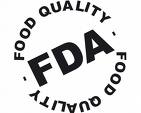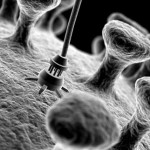
www.singularityhub.com
Last week, the Organisation for Economic Co-operation and Development (OECD) issued its updated manual to support the safety testing of manufactured nanomaterials. The OECD describes itself as follows:
“ The Organisation for Economic Co-operation and Development (OECD) is an intergovernmental organization in which representatives of 31 industrialised countries in North America, Europe and the Asia and Pacific region, as well as the European Commission, meet to co-ordinate and harmonise policies, discuss issues of mutual concern, and work together to respond to international problems.”
The United States is a member country of OECD.
The Guidance Manual for the Testing of Manufactured Nanomaterials: OECD’s Sponsorship Programme is a product of the Joint Meeting of the Chemicals Committee and the Working Party on Chemicals, Pesticides and Biotechnology of the OECD.
One goal of the projects contributing to the manual was to determine whether test guidelines for the safety of traditional chemicals may be suitable for testing the safety of manufactured nanomaterials. Researchers are particularly interested in the role that particle size and specific area may play in the resulting toxicity of the nanomaterials.
What strikes me here – and when reading other sources on the safety of nanomaterials – is the need to focus on particle size as a factor in determining the health and safety risks. In some respects, this is reminiscent of asbestos research, in which the size, shape, and characteristics of the asbestos fibers, as well as the manner in which they are bonded to or contained in the product, define the health risks associated with asbestos exposure. It took a half century of asbestos research to arrive at an understanding of the mechanisms by which the fibers cause illness, including malignancies, and other physiological changes that may not result in illness.
The hope for nanotechnology is that this discussion and investigation are taking place sooner, rather than later, and that there is a concerted effort internationally to coordinate and share research. Although unregulated nanomaterials are in extensive use already, and many more uses of nanotechnology become available each day, it is worth recognizing the efforts being made to identify the risks at an early stage.
Perhaps the asbestos example taught us something after all.
The manual may be accessed at:
http://www.oecd.org/department/0,3355,en_2649_37015404_1_1_1_1_1,00.html

 Recently, the President’s Cancer Panel released its report, “Reducing Environmental Cancer Risk: What We Can Do Now,” which made the bold and distressing statement that “the true burden of environmentally induced cancer has been grossly underestimated.” Currently, there are approximately 80,000 chemicals on the market in the United States many of which are likely carcinogens that are used by most Americans on a regular basis in their daily lives. The risks of these carcinogenic substances have a significantly greater impact on children than adults. The Panel observed that most of these chemicals are “un- or understudied and largely unregulated.” Among other things, the Panel concluded that research on the environmental causes of cancer has taken a back seat to research on the genetic and molecular mechanisms that cause cancer. Research into the environmental causes of cancer has been given low priority and insufficient funding, they say.
Recently, the President’s Cancer Panel released its report, “Reducing Environmental Cancer Risk: What We Can Do Now,” which made the bold and distressing statement that “the true burden of environmentally induced cancer has been grossly underestimated.” Currently, there are approximately 80,000 chemicals on the market in the United States many of which are likely carcinogens that are used by most Americans on a regular basis in their daily lives. The risks of these carcinogenic substances have a significantly greater impact on children than adults. The Panel observed that most of these chemicals are “un- or understudied and largely unregulated.” Among other things, the Panel concluded that research on the environmental causes of cancer has taken a back seat to research on the genetic and molecular mechanisms that cause cancer. Research into the environmental causes of cancer has been given low priority and insufficient funding, they say.

